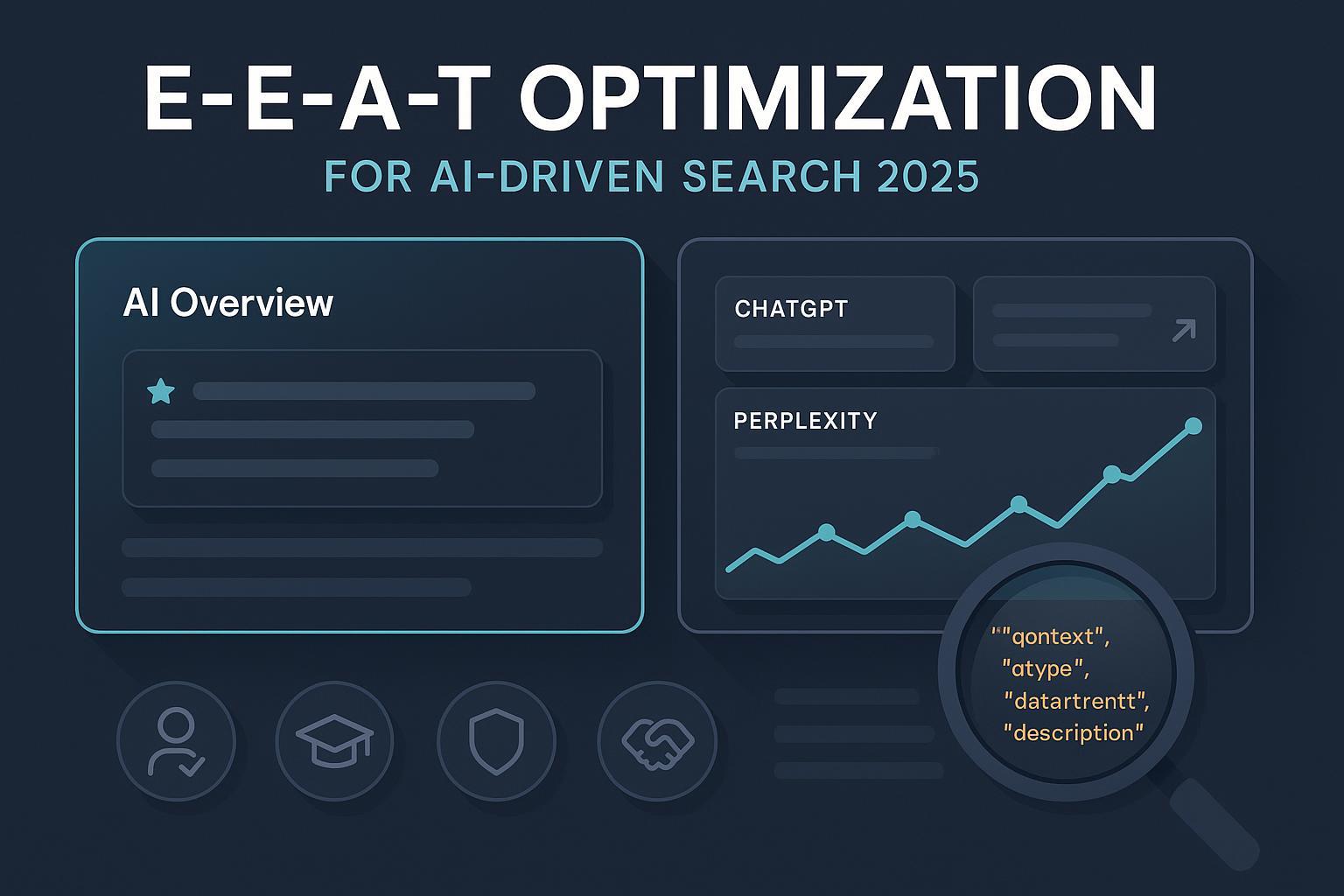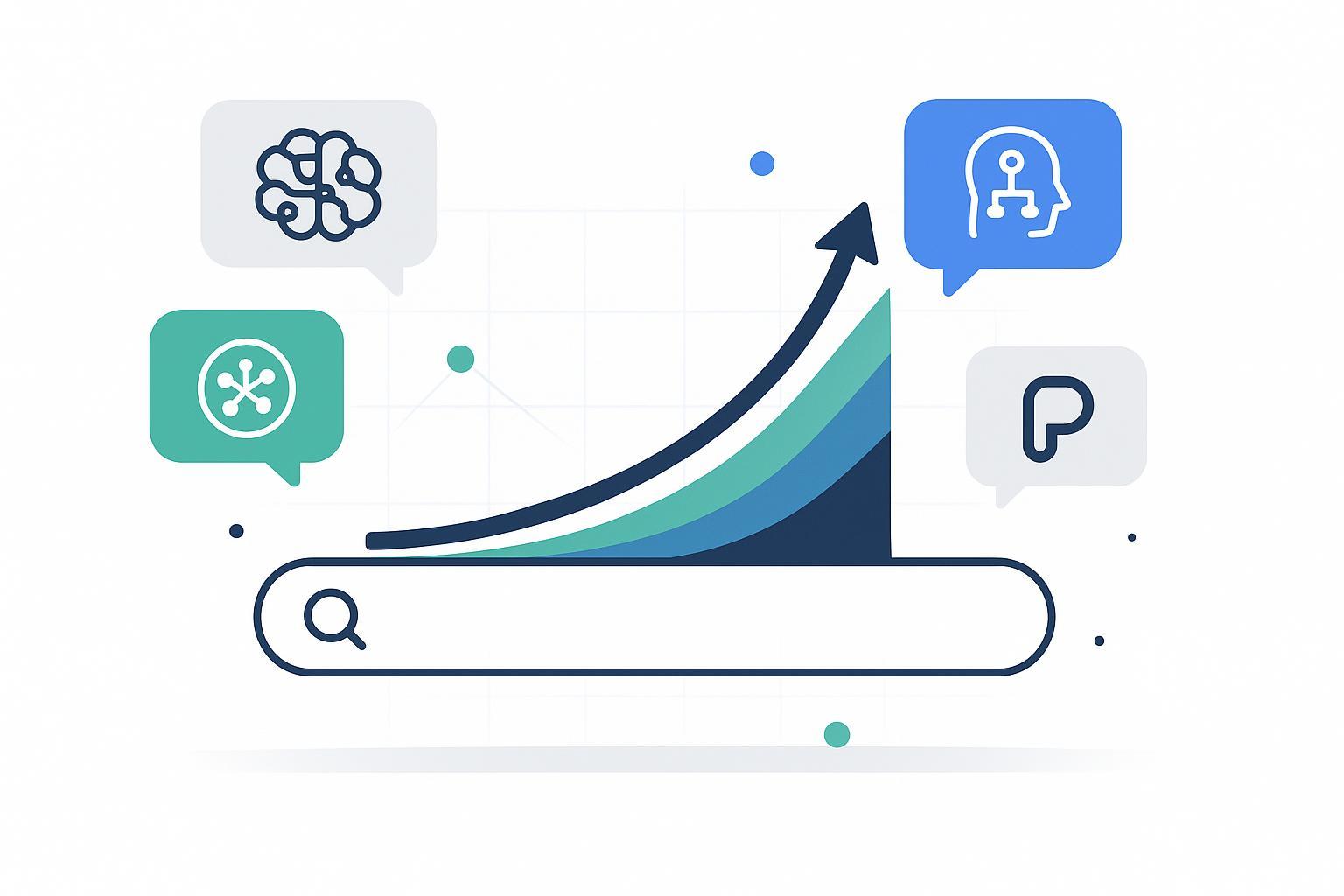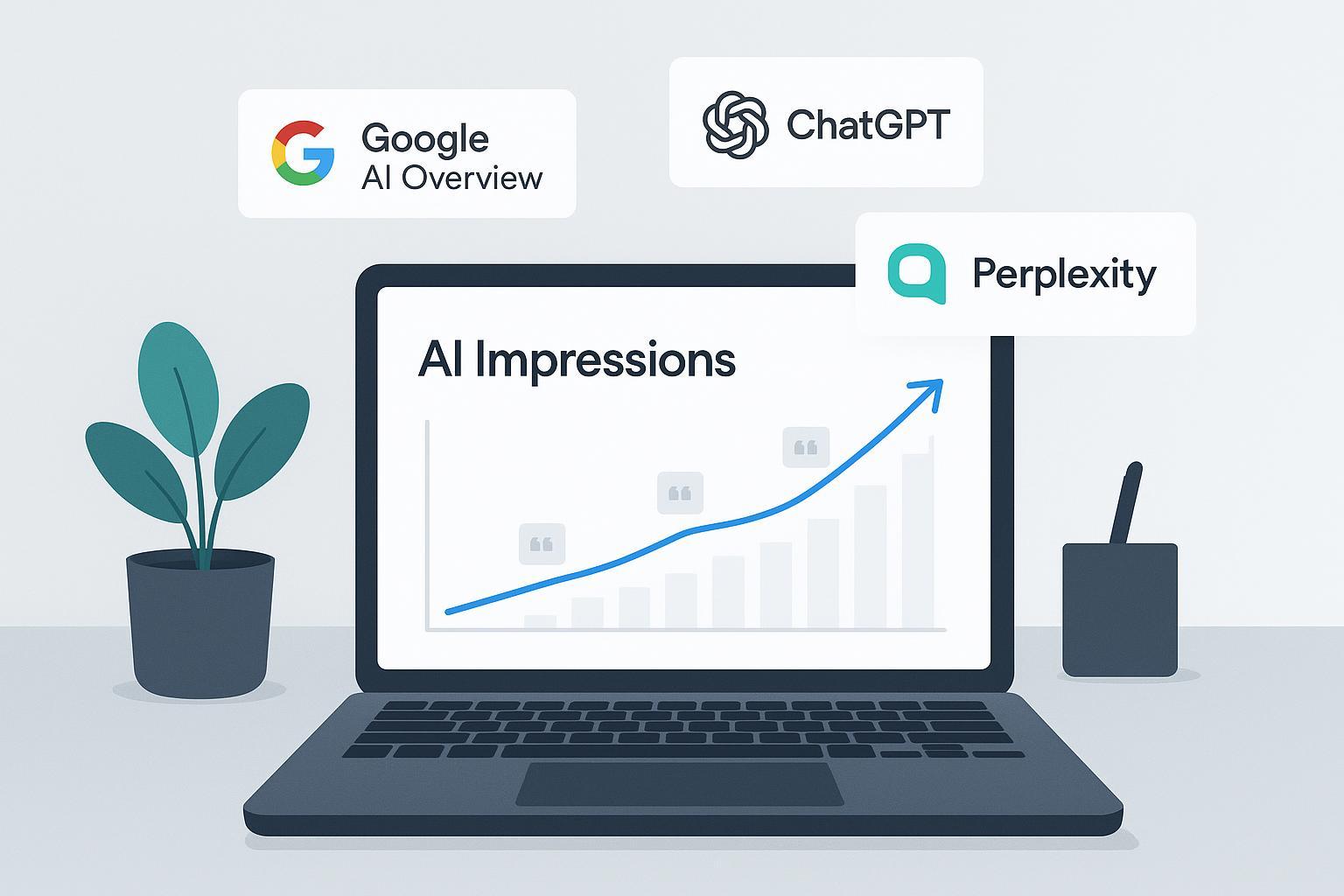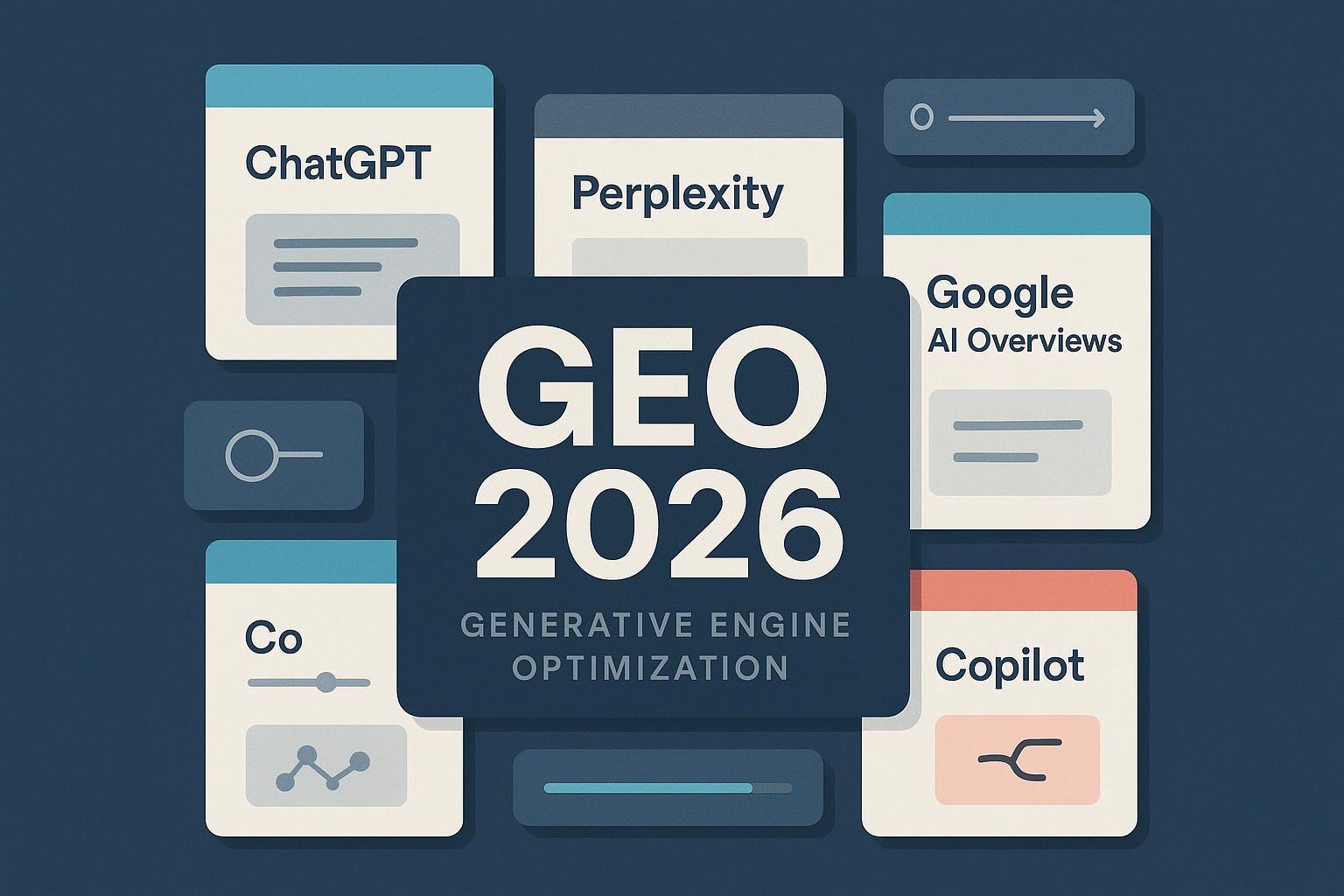Essential E-E-A-T Strategies for AI Search (2025 Best Practices)
Discover advanced E-E-A-T best practices for ranking in AI-driven search engines like Google SGE & ChatGPT. Practical workflows, schema tips, and real benchmarks for 2025.


AI-driven search experiences—Google’s AI Overviews/AI Mode and LLM-based engines like ChatGPT and Perplexity—now surface synthesized answers first, often with limited link real estate. In this environment, demonstrating E‑E‑A‑T (Experience, Expertise, Authoritativeness, Trustworthiness) is the difference between being cited or invisible. Google treats E‑E‑A‑T as a quality framework reflected across its systems rather than a single “ranking factor,” and its guidance emphasizes people‑first content, technical health, and trust signals. See the official perspective in Google’s “AI features and your website” page and the May 2025 guidance on succeeding in AI search, both under Search Central: AI features and your website (Google Search Central, 2025) and Top ways to ensure your content performs well in AI search (May 2025).
1) What E‑E‑A‑T Means in 2025—and Why It Matters for AI Engines
E‑E‑A‑T helps systems and evaluators judge whether your content can be trusted. In the latest Search Quality Rater Guidelines (2025), trust is the foremost consideration, supported by clear authorship, first‑hand experience, transparent sources, and reputation signals. You can read the current document at Google’s Search Quality Rater Guidelines (PDF, 2025). For a practitioner’s synthesis, Search Engine Land’s E‑E‑A‑T guide remains a useful companion.
Why this matters now:
- AI Overviews and LLM answers prefer sources that are original, expert, and well‑structured.
- Engines differ in citation behavior. Perplexity consistently shows citations, while ChatGPT’s source selection is less transparent; one 2024 analysis reported frequent misattribution of original publishers. See the summary of those findings at Digital Content Next’s overview of Tow Center attribution errors (2024) and a technical explainer of Perplexity behavior at Hostman’s “How Perplexity AI Works”.
Key implication: You must produce authoritative originals, make expertise and experience unmistakable, and structure content so AI systems can identify and cite you correctly.
2) Foundational E‑E‑A‑T Signals You Must Have
These are non‑negotiables. Without them, advanced tactics will underperform.
-
Author identity and credentials
- Publish an author bio for each article. Include job title, affiliation, and experience. Link to authoritative profiles (e.g., LinkedIn, Google Scholar, professional associations).
- Maintain a central “Authors” library and ensure consistent naming across articles and schema.
-
Proven first‑hand experience
- Use “I/We did X” evidence: screenshots, methodology notes, timelines, and outcomes. Distinguish original testing from secondary summaries.
-
Transparent sourcing and citations
- Cite the canonical primary sources within the narrative. Avoid generic “click here”; wrap the fact or definition in the anchor text.
-
Site‑level trust and reputation
- Surface About, Contact, Privacy, Terms, editorial policy, and ownership info.
- Implement HTTPS, security headers, and clear customer service workflows.
-
People‑first content and technical health
- Follow Google’s quality basics in the SEO Starter Guide: satisfy intent completely, avoid thin/duplicative pages, keep pages fast and accessible.
Trade‑offs and boundaries: Excessive credential detail can overwhelm; aim for clarity without fluff. Balance first‑hand narrative with structured evidence so both humans and machines can parse it.
3) Structured Data That Amplifies E‑E‑A‑T (JSON‑LD)
Schema markup helps AI systems and search engines resolve who wrote what, what it’s about, and how it ties to authoritative identities.
- Article/BlogPosting: headline, description, dates, author (Person), mainEntityOfPage.
- Person: name, jobTitle, affiliation (Organization), url, sameAs (authoritative profiles).
- Organization: name, url, logo, sameAs, contactPoint.
- Review/Rating where appropriate; avoid self‑serving or disallowed implementations.
- FAQPage/QAPage for question‑led topics; keep FAQs genuinely helpful.
Validate with the Rich Results/Structured Data intro and monitor Search Console for issues. Use the schema.org vocabulary: Schema.org.
Example: Article with Person author
{
"@context": "https://schema.org",
"@type": "Article",
"headline": "2025 E‑E‑A‑T Playbook for AI Search",
"datePublished": "2025-10-07",
"dateModified": "2025-10-07",
"author": {
"@type": "Person",
"name": "Your Name",
"jobTitle": "SEO Strategist",
"affiliation": {"@type": "Organization", "name": "Your Company"},
"sameAs": [
"https://www.linkedin.com/in/yourprofile",
"https://scholar.google.com/citations?user=XXXX"
],
"url": "https://example.com/authors/your-name"
},
"mainEntityOfPage": "https://example.com/2025-eeat-ai-search"
}
Example: Organization
{
"@context": "https://schema.org",
"@type": "Organization",
"name": "Your Company",
"url": "https://example.com",
"logo": "https://example.com/logo.png",
"sameAs": [
"https://twitter.com/yourcompany",
"https://www.linkedin.com/company/yourcompany"
],
"contactPoint": {
"@type": "ContactPoint",
"contactType": "customer support",
"email": "support@example.com"
}
}
Example: FAQPage
{
"@context": "https://schema.org",
"@type": "FAQPage",
"mainEntity": [
{
"@type": "Question",
"name": "What is E‑E‑A‑T?",
"acceptedAnswer": {
"@type": "Answer",
"text": "E‑E‑A‑T stands for Experience, Expertise, Authoritativeness, Trustworthiness."
}
}
]
}
Common mistakes to avoid: mis‑typed properties, orphaned Person entities (no resolveable URL), self‑serving Review markup, and FAQ spam. Always validate and keep properties consistent across the site.
4) The Hybrid AI+Human Content Workflow That Wins Citations
A repeatable workflow improves consistency and auditability.
-
Discovery and intent mapping
- Cluster queries by task/outcome; include conversational, long‑form, and follow‑up questions you see in AI answers.
-
Drafting with AI assistance
- Use AI to accelerate outlines and gap identification. Avoid publishing AI‑generated text without human review.
-
Expert review and first‑hand evidence
- A qualified practitioner edits the draft, adds methods, screenshots, and results. Include pitfalls and trade‑offs.
-
Author transparency and sourcing
- Add a detailed bio and link authoritative profiles. Cite canonical sources inline with descriptive anchors.
-
Structured data and technical QA
- Implement Article + Person + Organization markup; validate; fix CWV/accessibility issues; ensure mobile UX.
-
Publication and AI citation testing
- Query Google AI Overviews/AI Mode, Perplexity, and ChatGPT to see if your page appears as a cited source. Log prompts, results, and gaps.
-
Iteration and remediation
- If misattribution or absence occurs, strengthen originality, clarify claims, and improve schema and internal linking.
5) Monitoring AI Visibility and Sentiment: A Practical Workflow Example
Cross‑platform tracking is now a core E‑E‑A‑T practice. Here’s a lightweight workflow many teams use:
- List your priority topics and queries. Track whether your pages are cited in Google’s AI Overviews/AI Mode, Perplexity answers, and ChatGPT responses. Record the wording, included sources, and any sentiment.
- When a citation appears, capture the answer, source list, and context. If misattribution occurs, compare your content to the cited source; add clarifying evidence and schema, then re‑test.
- Aggregate results weekly to calculate your share‑of‑voice in AI answers across target topics. Pair with qualitative sentiment notes to detect emerging risks.
First product mention (with disclosure): Many teams centralize this monitoring inside Geneo, which consolidates cross‑engine AI visibility, citations, and sentiment for brands. Disclosure: Geneo is our product; the example is provided to illustrate a practical monitoring workflow objectively.
For advanced tips on community signals that influence AI citations, see this internal resource on Reddit communities and AI search citation patterns.
6) Aligning to Conversational and Voice Search
E‑E‑A‑T is reinforced when your content answers natural language questions directly and transparently.
-
Question‑led headings and concise answers
- Use H2/H3 as real questions; give a succinct answer first, then detailed context. This structure aids featured snippets and voice assistants.
-
Long‑tail intent and follow‑ups
- Anticipate adjacent questions and build topic clusters. Cross‑link to deeper explainers using descriptive anchors.
-
Speakable and local signals
- Implement FAQ/QAPage where appropriate and keep your Google Business Profile and LocalBusiness schema complete to support local voice queries.
-
Mobile speed and accessibility
- Maintain strong CWV, semantic headings, alt text, and ARIA roles. Google reiterates these fundamentals in its SEO Starter Guide.
-
Reinforce expertise and sourcing
- Show credentials and cite primary docs when defining terms or reporting data. This raises confidence for AI engines selecting sources.
For an accessible primer on E‑E‑A‑T concepts, Moz’s learning hub offers a good overview: Moz’s E‑E‑A‑T overview.
7) Remediating Negative E‑E‑A‑T Signals
When issues surface, act fast and transparently.
-
- Add clear corrections with timestamps and editor’s notes. Cite authoritative sources and, if your content was cited incorrectly in AI, re‑check after updates.
-
Human oversight for AI‑assisted content
- Require editorial QA for any AI‑generated text. The March 2024 and subsequent updates targeted low‑quality/spam; your process should prevent it.
-
Update or prune thin content
- Enrich shallow pages, consolidate duplicates, and remove irredeemable content. Re‑submit sitemaps after structural changes.
-
- Improve About/Contact/Policies, Organization schema, and ownership clarity.
-
Review management
- Request honest reviews, respond constructively, and mark up reviews only where allowed.
-
Guard against site reputation abuse
- Do not rent subdomains to unrelated content for ranking gains; follow Search Central policy updates.
8) Benchmarks to Set Expectations
Expect shifting traffic patterns when AI Overviews are present. Industry reporting in 2024–2025 shows a wide range of CTR impacts depending on query types and datasets. For example, Search Engine Land noted new lows across organic and paid CTR in 2025: see Search Engine Land’s CTR analysis (2025). Treat any figure as study‑specific, validate with your analytics, and focus on inclusion share‑of‑voice inside AI answers—not just classic blue‑link CTR.
9) Practitioner Checklists
Use these as starting points; adapt to your stack and resources.
-
E‑E‑A‑T audit (monthly)
- Authors: Bio completeness, credentials linked, Person schema consistent.
- Evidence: First‑hand artifacts (screens, methods, results) present.
- Sourcing: Canonical primary sources cited with descriptive anchors.
- Trust pages: About, Contact, Policies, ownership clarity.
- Reputation: Review responses, community presence, third‑party profiles.
-
Schema implementation (per article)
- Apply Article + Person + Organization JSON‑LD.
- Validate and fix errors; monitor Search Console.
- Add FAQPage only when genuinely helpful; avoid redundancy.
-
AI visibility monitoring (weekly)
- Query target topics in Google AI Overviews/AI Mode, Perplexity, and ChatGPT; record citations and sentiment.
- Calculate share‑of‑voice across engines by topic cluster; flag misattributions.
- Centralize notes and iterate content. Many teams use Geneo to streamline cross‑engine tracking and sentiment analysis.
For deeper comparisons of AI brand monitoring tools and methodologies, see our internal explainers on Profound review with alternatives (2025) and Profound vs. Brandlight comparison.
10) Common Pitfalls and Trade‑Offs
- Over‑schematizing without content quality: schema can’t rescue weak pages.
- Self‑serving or disallowed Review markup: can trigger penalties.
- Undisclosed AI assistance: erodes trust when discovered; disclose editorially where appropriate.
- Shallow “expertise”: name‑only credentials without first‑hand evidence rarely earn citations.
- Link stuffing: too many external anchors reduces readability and can signal low editorial judgment.
11) A 30/60/90‑Day Implementation Plan
-
Days 1–30: Baseline audit
- Inventory authors, bios, and expertise gaps. Fix trust pages and security basics. Stand up JSON‑LD templates (Article, Person, Organization). Begin weekly AI visibility tracking.
-
Days 31–60: Publish authoritative originals
- Ship two to three cornerstone guides with first‑hand testing, clear sourcing, and question‑led headings. Validate schema; improve CWV/accessibility. Iterate based on AI citation tests.
-
Days 61–90: Scale and refine
- Expand topic clusters and internal links. Add genuinely helpful FAQs. Systematize review management and community signals. Establish monthly E‑E‑A‑T audits and share‑of‑voice reporting.
Final Notes
- Keep your practices current: Google’s documentation evolves; the Search Central pages for AI features and structured data remain your canonical references.
- Treat E‑E‑A‑T as the foundation. It won’t guarantee inclusion, but it measurably increases your chance of being cited by AI systems and chosen by discerning users.





